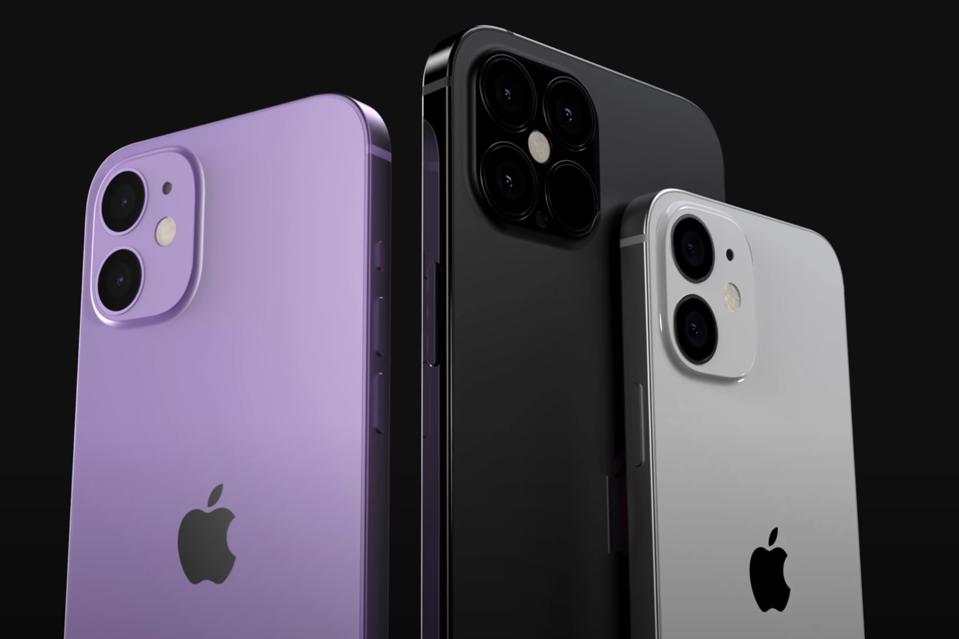iPhone 12 on the horizon
I know COVID-19 is out there, and, being in New York, the buffeted effect of the pandemic is everywhere around me. It’s like the world is coming to an end, or like, as more spiritual people are saying, God is sending us a message. This is all well and good, but, life continues, since I […]

I know COVID-19 is out there, and, being in New York, the buffeted effect of the pandemic is everywhere around me. It’s like the world is coming to an end, or like, as more spiritual people are saying, God is sending us a message. This is all well and good, but, life continues, since I am pretty confident you will take the necessary precautions to stay super safe. Certainly, no cliché is intended here. Do your very best and leave the rest to God. Life must go on. So, let’s resume talking about some of the things we used to love hearing about – like smartphone releases and unpacked events.
According to the rumors and tech gossip, iPhone 12 is going to be released much earlier this year compared to its predecessors. Business strategy, or pandemic-inducement to blame? I don’t know; but the scheduled release date is 8 September 2020. For comparison, iPhone 11 was released on 20 September 2019.
Capability-wise, iPhone 12 may not come with EarPods or a power adapter, perhaps as a way of forcing you to buy Apple’s wireless AirPods. (AirPod and AirPod Pro earbuds currently retail at $159 and $249, respectively.) The iPhone 12 will probably look like the iPhone 11, though the edges of iPhone 12 may be slightly bowed. Face ID, or the front-facing cameras with 3D depth sensing that started with iPhone X, will also be supported in iPhone 12. This feature scans your face to unlock your phone and authorize digital payments, for example.
It’s kind of bitter-sweet with iPhone 12. Sweet because all the four new models will support the anticipated life-changing 5G technology, though the usefulness of this feature depends on whether or not you have access to the mast for 5G. Sleeping giant, kind of. However, 5G requires a lot of resources, including battery power. So, without increasing battery power in iPhone 12 compared to iPhone 11, some things are certainly going to give. That is the bitter part of the iPhone 12 deal. A small battery life could mean that features will be limited compared to what you would see in Android phones like the Samsung Galaxy.
The rumored battery details of iPhone 12 include 2,227 mAh (Apple iPhone 12), 2,775 mAh (iPhone 12 Max), 2,815 mAh (iPhone 12 Pro) and 3,687 mAh (iPhone 12 Pro Max). (Note that mAh stands for milliamps-hours, the unit of small quantities of energy. For big quantities like in power generators, we use Watt-hour.) Honestly this is pittance, realizing how voracious the 5G technology is expected to be in terms of power consumption. Remember the Huawei Mate 30 Pro? This device, which was released on 19 September 2019, promised a gigantic battery capacity of 4,500-mAh, compared to (4100 mAh) for iPhone 11 Max and Galaxy S10 Plus (4100 mAh). Huawei claims this capacity will give you two days of heavy usage. The Mate is also compatible with a 27-Watt wireless charger that Huawei said it was bringing to market, which will reportedly charge the phone twice as fast as a standard charger. Reverse charging, which lets you use the Mate 30 Pro as a wireless charger for other devices, is supported. “The Mate 30 Pro 5G model has the longest-lasting 5G battery and better 5G cooling system when compared to the Samsung Galaxy Note 10 Plus 5G,”
In terms of the costs of iPhone 12, you are looking at: (a) iPhone 12 (basic, 5.4-inch) – $699 (64GB), $749 (128GB), $849 (258GB), (b) iPhone 12 Max (6.1-inch) – $799 (64GB), $849 (128GB), $949 (258GB), (c) iPhone 12 Pro (6.1-inch) – $1,049 (128GB), $1,149 (256GB), $1,349 (512GB), and (d) iPhone 12 Pro Max (6.7-inch) – $1,149 (128GB), $1,249 (256GB), $1,449 (512GB). The iPhone 12 Max is thus expected to be the biggest “pain point.” It is reportedly the new name for the successor to the iPhone 11, which was the model that sold the most. The price has increased by $100 for all the three storage capacities. Note that the price of the smaller 5.4-inch iPhone 12 model matches that of the iPhone 11.
For detailed comparison purposes, the prices of the iPhone 11 smartphones are: iPhone 11 (64GB, 128GB, and 256GB) for $699, $749, and $849 respectively; iPhone 11 Pro (64GB, 256GB, and 512GB) for $999, $1,149, and $ 1,349, respectively; and iPhone 11 Pro Max (64GB, 256GB, and 512GB) for $1,099, $1,249, and $1,449, respectively. By way of further comparison, Apple’s entry-level device for the phones in 2018 – the iPhone XR – cost $750 and it sold the most. As noted by The New York Times newspaper at the time (20 September 2019), “Apple might have hit the ceiling this past year (i.e., 2018), as sales of the two models that began at $1,000 or more in last year’s release lagged expectations. The falling price (from 2018 to 2019) suggests Apple sees that trend and is trying to entice more people to upgrade.”
The iPhone 12 will certainly be fighting an uphill battle with competing devices as far as the battery power is concerned, though I am not entirely sure of how the Mate is doing in regard to its operating system.
